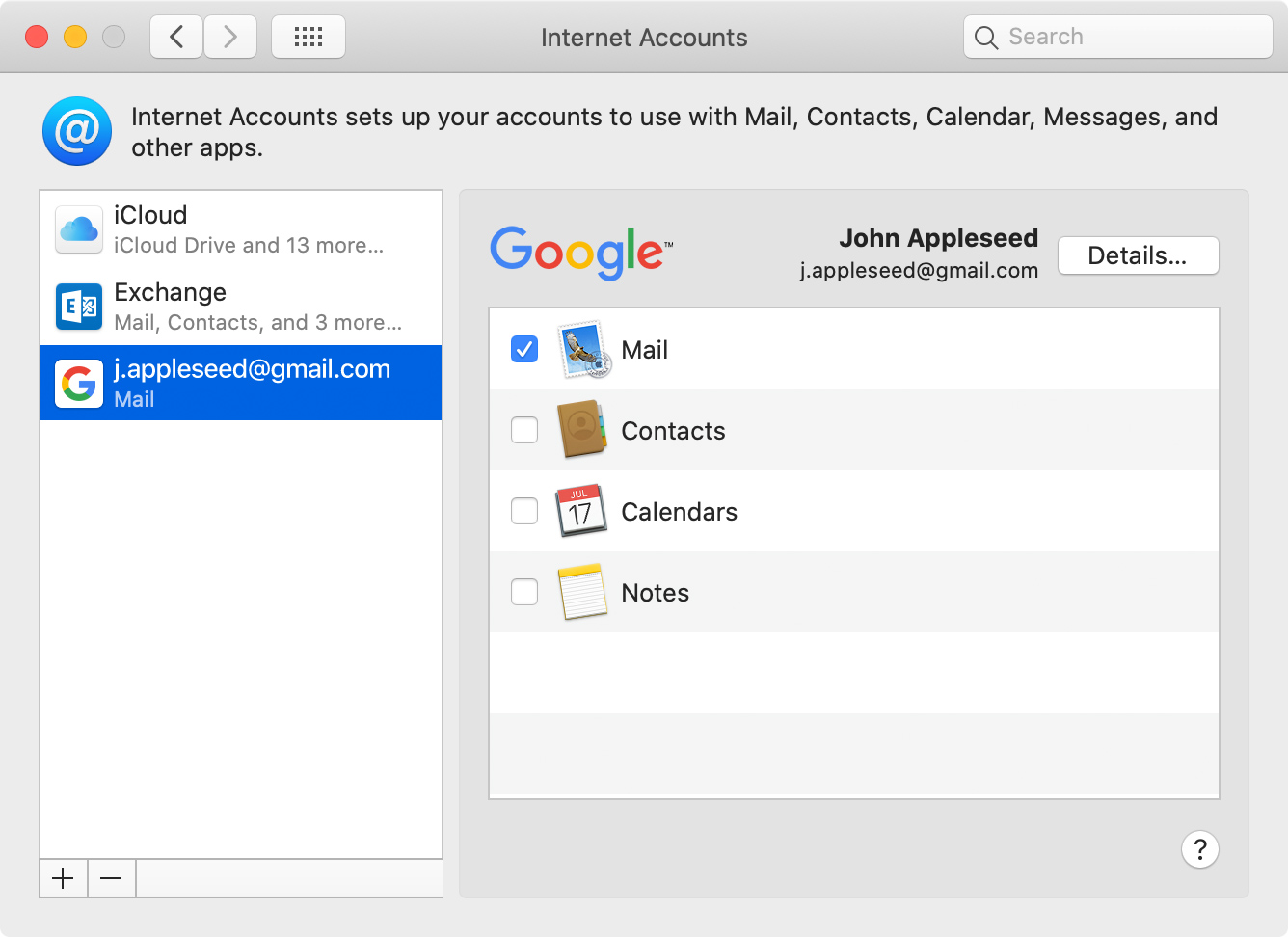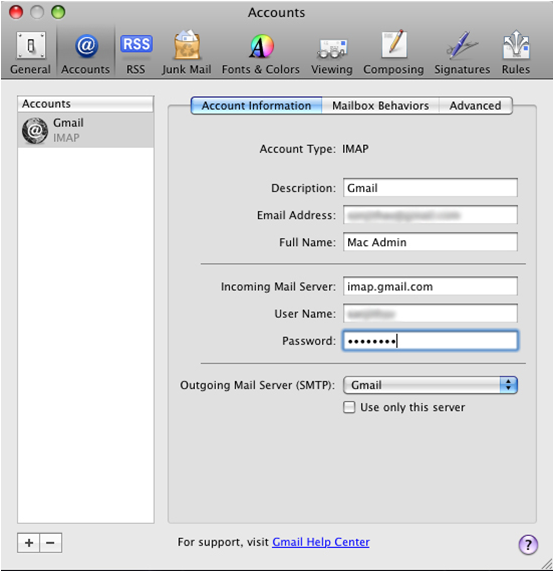On your computer, open Gmail. In the top right, click Settings. Click the Forwarding and POP/IMAP tab. In the “IMAP Access” section, select Enable IMAP. Click Save Changes. Step 2: Change your IMAP settings in your email client. Use the table below to update your client with the correct information.
How Do I Use Gmail For My Email Client On A Mac Os
Mail User Guide

- Configure Gmail Incoming/Inbox IMAP Server Under the Username section, enter the Gmail account email address. Enter the default password you use to login to Gmail Account. For SMTP port enter 993.
- Step 2: Tweak labels in Gmail. When you use Gmail on the Web, you can take advantage of a few unique features that traditional email clients like Mail don’t support. The biggest example: Gmail.
Use the Mail app to send, receive, and manage email for all of your email accounts in one location. Simply add the accounts—such as iCloud, Exchange, Google, school, work, or other—you want to use in Mail.

Add an email account to use in Mail
The first time you open the Mail app on your Mac, it may prompt you to add an account. Select an account type—if you don’t see your type, select Other Mail Account—then enter your account information.
If you already added an email account, you can still add more. In Mail, choose Mail > Add Account, select an account type, then enter your account information. Make sure the Mail checkbox is selected for the account.
If you’re using an account on your Mac with other apps, such as Contacts or Messages, you can also use that account with Mail. In Mail, choose Mail > Accounts to open Internet Accounts preferences, select the account on the left, then select the Mail checkbox on the right.
Temporarily stop using an email account in Mail
In the Mail app on your Mac, choose Mail > Accounts.
Select the account, then deselect the Mail checkbox.
Now the account’s messages are not shown in Mail.
Start using an email account again in Mail
How Do I Use Gmail For My Email Client On A Macbook
In the Mail app on your Mac, choose Mail > Accounts.
Select the account, then select the Mail checkbox.
The account’s messages are shown again in Mail; they don’t need to be downloaded from the server again.
Remove an email account from Mail
When you remove an email account from Mail, the account’s messages are deleted and no longer available on your Mac. Copies of messages remain on the account’s mail server and are still available (from webmail, for example).
Important: If you’re unsure whether messages you want to keep are still on the mail server, move or copy them to a mailbox stored on your Mac (the mailbox appears in the On My Mac section in the Mail sidebar) before you delete the account in Mail.
In the Mail app on your Mac, choose Mail > Preferences, then click Accounts.
Select an account, then click the Remove button .
Note: If the account is used by other apps on your Mac, you’re asked to remove the account in Internet Accounts System Preferences. Click the button to open Internet Accounts, then deselect the Mail checkbox for the account. To stop using the account in all apps, make sure the account is selected, then click the Remove button .
Do you use Gmail? When you click an email link on a web site does Apple Mail or some other email client open? If so, you should follow these instructions to make Gmail your default email client. I’ve provided instructions for the 3 most widely used web browsers: Safari, Chrome and Firefox. Follow the instructions listed for the browser you use.
How Do I Use Gmail For My Email Client On A Macbook Pro
[UpdateFebruary 2019 – If you’ve updated to macOS Mojave then you have Safari 12. The solution I outline below, the mailto extension, does not work with Safari 12. Fred Potter, the developer of a new solution, pointed this out to me. While I haven’t tested his solution, Fred created a Mac application named Open in Webmail. Get Open in Webmail from the Mac App Store where it currently costs 99 cents. This app currently has 8 reviews and an overall rating of 4.9 stars out of 5.]
Safari Instructions
- Open Safari and click this link.
- A Safari Extension named mailto.safariextz will be downloaded to your Mac.
- Go to your Downloads folder and double-click mailto.safariextz to initiate the installation process.
- You’ll be asked if you want to install this mailto extension.
- Indicate that you do want it installed.
That’s it. The extension has been installed and enabled. Test it to make sure it works. If you want to disable it in the future you can click on the Safari menu, select Preferences and then click on the Extensions button. Locate the mailto extension in the left-hand list and remove the checkmark next to Enable.

Note, in addition to Gmail you can also use this mailto extension to make any of the following your default email client: AOL, Fastmail, Hotmail / Windows Live Mail / Outlook.com, Yahoo or Zoho mail.
Chrome Instructions
- Open Chrome and visit this page.
- Click the button named Free to initiate the installation process.
- Click the Add button to install it.
- Select Gmail from the list of email services listed.
- Click the red dot to close the window.
That’s it. The extension has been installed, configured and enabled. Test it to make sure it works. If you want to disable it in the future you can click on the Chrome menu, select Preferences, then click on Extensions. Locate the mailto extension and remove the checkmark next to Enabled.
How Do I Use Gmail For My Email Client On A Mac File

Note, in addition to Gmail you can also use this mailto extension to make any of the following your default email client: AOL, Fastmail, Hotmail / Windows Live Mail / Outlook.com, Yahoo or Zoho mail.
Firefox Instructions
- Open Firefox, click on the Firefox menu and select Preferences.
- Click on the Applications button.
- Locate mailto under the Content Type and change the Action to Use Gmail.
- Click the red dot to close out of Firefox Preferences.
That’s it. Test it to make sure it works. If you want to change this in the future, return to the same preference area and change the mailto Action to one of the other options.
